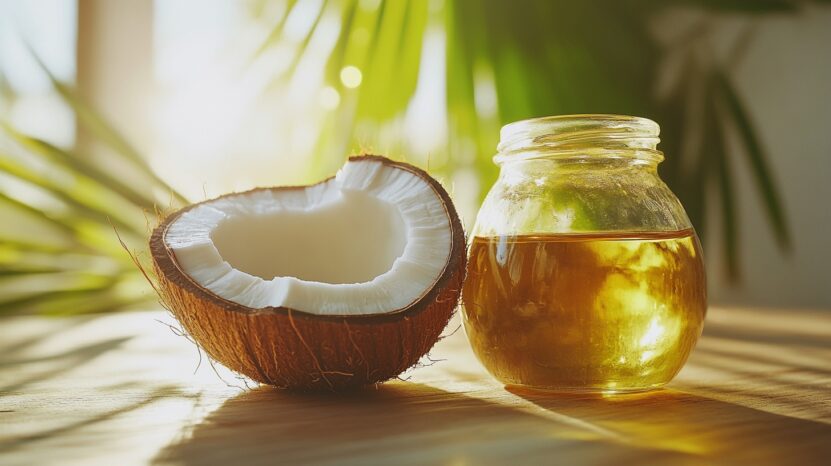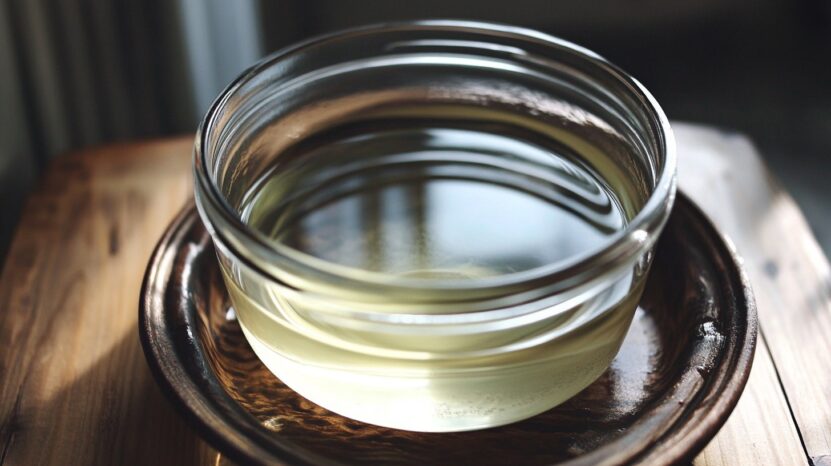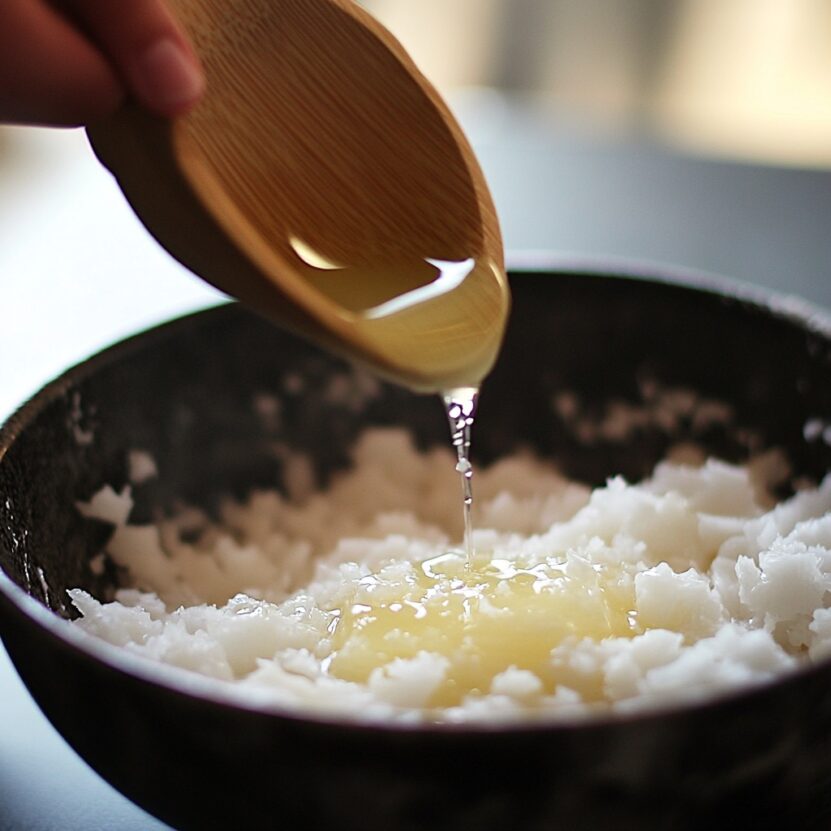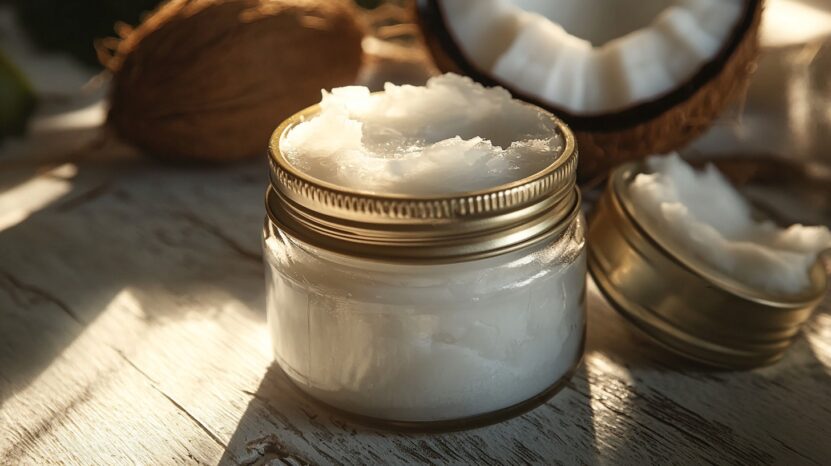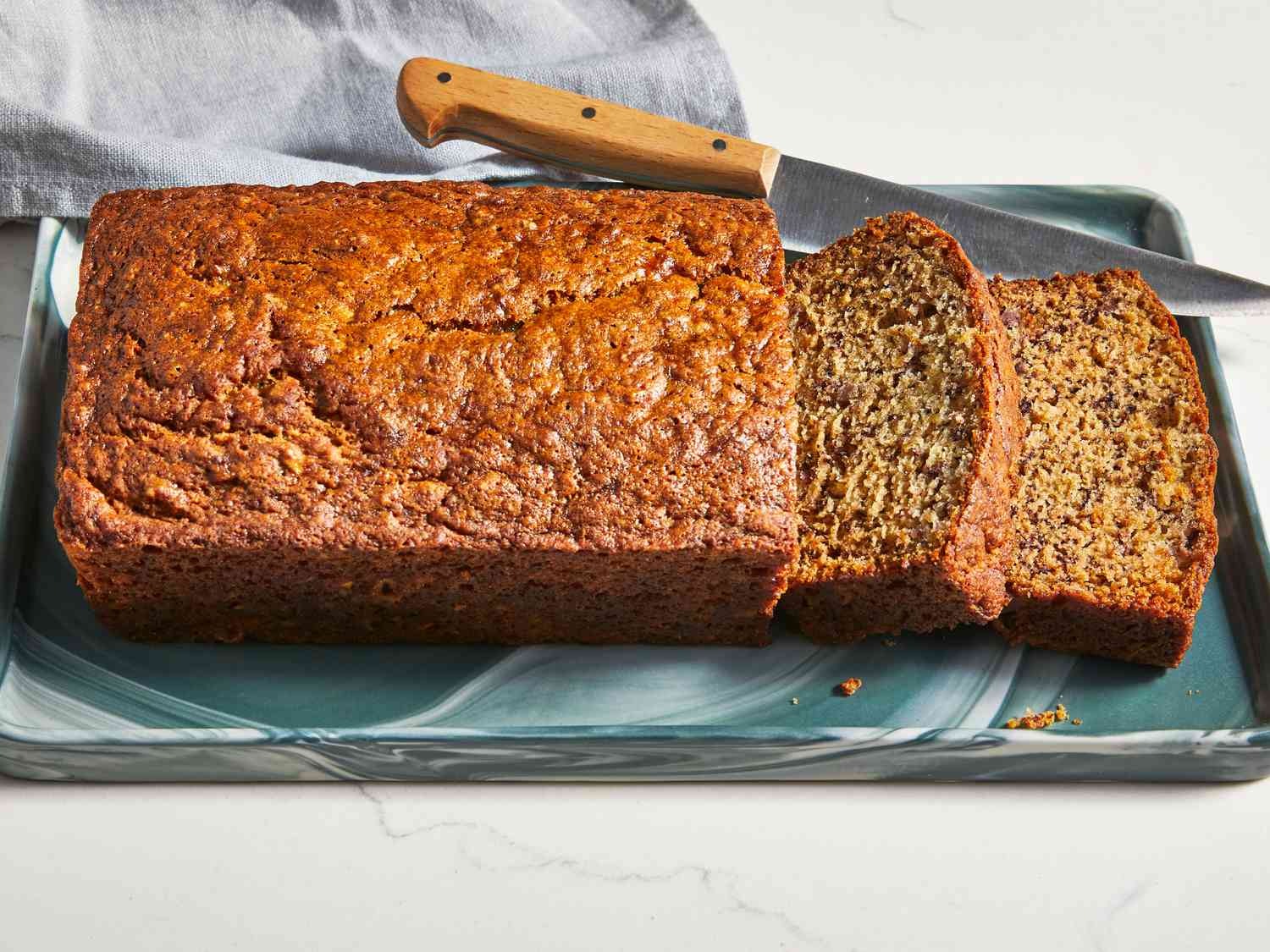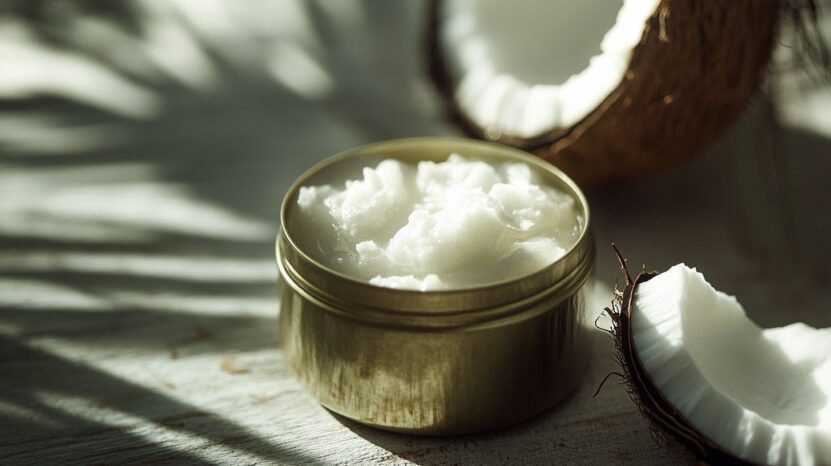
Share Post:
Coconut oil solidifies when temperatures drop, which can be inconvenient if you need it to stay liquid for cooking, skincare, or other uses.
The good news is, with the right approach, you can easily keep it from hardening and have it ready to use whenever you need it.
That is why we want to provide you with eight practical tips to keep it in liquid form, making it more convenient for everyday use.
Stop dealing with the hassle of solidified coconut oil and learn how to keep it liquid with these easy solutions.
How to Keep Coconut Oil Liquid?
Keeping coconut oil liquid is possible through quite a few methods, but here are the best steps out there.
1. Store in a Warm Location
One of the easiest ways to keep coconut oil in liquid form is by storing it in a consistently warm spot.
Areas near appliances that naturally generate heat, like the top of a refrigerator or a cupboard above the stove, work well for this purpose.
These locations maintain a mild, steady warmth that helps prevent it from solidifying without exposing it to high temperatures that could degrade its quality.
It’s important to strike a balance, though. Make sure the area isn’t too hot, as excessive heat can break down the oil’s beneficial properties and lead to spoilage over time.
Aim for a location that stays above 76°F (24°C), but well below the point where it could be damaged.
2. Use a Heating Pad or Seedling Mat
A reliable way to keep coconut oil in liquid form is by placing it on a heating pad or seedling mat.
These devices provide a steady, low-level heat that helps maintain the oil’s temperature above its natural solidifying point.
Unlike other heating methods, heating pads or seedling mats offer consistent warmth, preventing any sudden temperature changes that could cause it to harden again.
To use this method, position your jar or container directly on the mat or pad.
The gentle heat will keep the oil in liquid form without risking overheating. It’s important to periodically check the temperature to ensure it stays at an optimal level.
3. DIY Double Boiler
A DIY double boiler is a simple and effective way to keep coconut oil liquid without risking overheating. Start by filling a large bowl or pot with warm water, and then place your jar or container inside the water.
The gentle warmth will slowly melt the oil, maintaining a liquid state without exposing it to direct heat, which can degrade its quality.
To ensure the oil stays liquid, replace the water every so often as it cools.
- Cooking
- Baking
- Beauty treatments
It’s a quick, low-maintenance solution that gives you just the right amount of heat control.
Plus, since you’re not heating the oil directly on the stove, there’s no risk of accidentally overheating it, which can lead to it losing its beneficial properties.
4. Invest in a Warmer
For those who rely on coconut oil regularly, warmer is a smart investment. These devices are specifically designed to keep them in a liquid state by maintaining a stable temperature.
Most warmers come with adjustable heat settings, allowing you to choose the precise temperature needed to keep the oil from solidifying without overheating it.
Oil warmers offer a hassle-free, hands-off solution that eliminates the need to manually reheat your it each time it hardens.
A warmer ensures it’s always ready for immediate use by keeping the oil at an ideal temperature.
Plus, the consistent warmth helps preserve the oil’s quality, preventing degradation from repeated reheating.
5. Blend with Other Oils
Mixing coconut with another liquid oil is an effective way to lower its melting point, keeping it in liquid form for longer.
Oils like olive, avocado, or almond naturally stay liquid at lower temperatures, making them great options to blend with coconut.
The combination helps reduce the likelihood of solidifying while adding the unique properties of other options.
For instance, olive oil brings extra antioxidants, while avocado oil adds healthy fats.
You can experiment with different oil ratios to find the consistency that works best for your specific needs.
A common approach is to use a 1:1 or 2:1 ratio of coconut to your preferred liquid. Adjust the amount based on whether you want a thicker or more fluid blend.
6. Opt for Fractionated Coconut Oil
Fractionated coconut oil is specially processed to remove its long-chain fatty acids, leaving only medium-chain triglycerides (MCTs).
The alteration makes it a convenient option for those seeking to stay liquid, even at cooler temperatures.
Although its composition differs slightly, fractionated coconut oil retains many of the same benefits as the regular version.
Its consistent liquid form makes it ideal for blending into recipes, applying to the skin without melting or using DIY beauty products.
If you’re looking for an easy solution to avoid the solidifying issue, fractionated coconut oil offers a reliable and hassle-free alternative that doesn’t compromise the essential properties.
7. Use Small Containers
Splitting your coconut oil into smaller containers offers a practical way to manage it. Instead of melting a large jar each time, you can melt only what you need, saving time and effort.
Using smaller containers also extends the shelf life of your coconut oil. Each time you expose it to air and heat, it risks contamination and spoilage.
Dividing it minimizes the need to open the main jar frequently, helping preserve its quality and freshness over time.
Plus, smaller containers are easier to store, taking up less space and offering more flexibility in where and how you keep your coconut oil.
8. Consider a Wide-Mouth Container
Choosing a wide-mouth container for your coconut oil makes it much more accessible, especially when it solidifies.
Unlike narrow jars, a wide-mouth option allows you to easily scoop out the amount you need, without having to melt the entire container.
A wide-mouth container also reduces the frustration of trying to scrape hardened it from hard-to-reach corners.
To maintain cleanliness and prevent contamination, always use a clean utensil to scoop the oil.
Avoid dipping fingers or using utensils, as this can introduce bacteria or other unwanted particles into the oil.
Taking these small precautions will ensure your coconut oil stays fresh and hygienic for longer use.
Preserving the Quality
Keeping coconut oil liquid is convenient, but ensuring its freshness and potency is just as crucial. Improper storage can lead to degradation, reducing the oil’s effectiveness for cooking or personal care.
- Store in a Cool, Dark Place: Light and heat can degrade oil over time. Keep it in a cool, dark place away from direct sunlight and heat sources to preserve its quality.
- Use an Airtight Container: Air exposure can cause oxidation, which lowers the quality. Seal it in an airtight container to protect it from air and keep it fresh.
- Keep it Clean: Use clean utensils to scoop out to avoid contamination. Designating a specific utensil for coconut oil can help prevent the introduction of bacteria or impurities.
- Monitor Expiration Dates: Coconut oil has a shelf life. Always check expiration dates and use it within the recommended period to ensure it’s still fresh and effective.
Did you know: Coconut oil is a great alternative for cooking and baking? Check out these tips for transitioning to a grain-free lifestyle to maximize health benefits.
Closing Thoughts
Coconut oil offers multiple uses in the kitchen and for personal care. Its habit of solidifying can be inconvenient, but with the right approach, you can keep it liquid without losing any of its quality.
By storing it in a warmer spot, using a heating pad, mixing it with others, or selecting fractionated coconut oil, you’ll always have liquid coconut oil ready to use.


